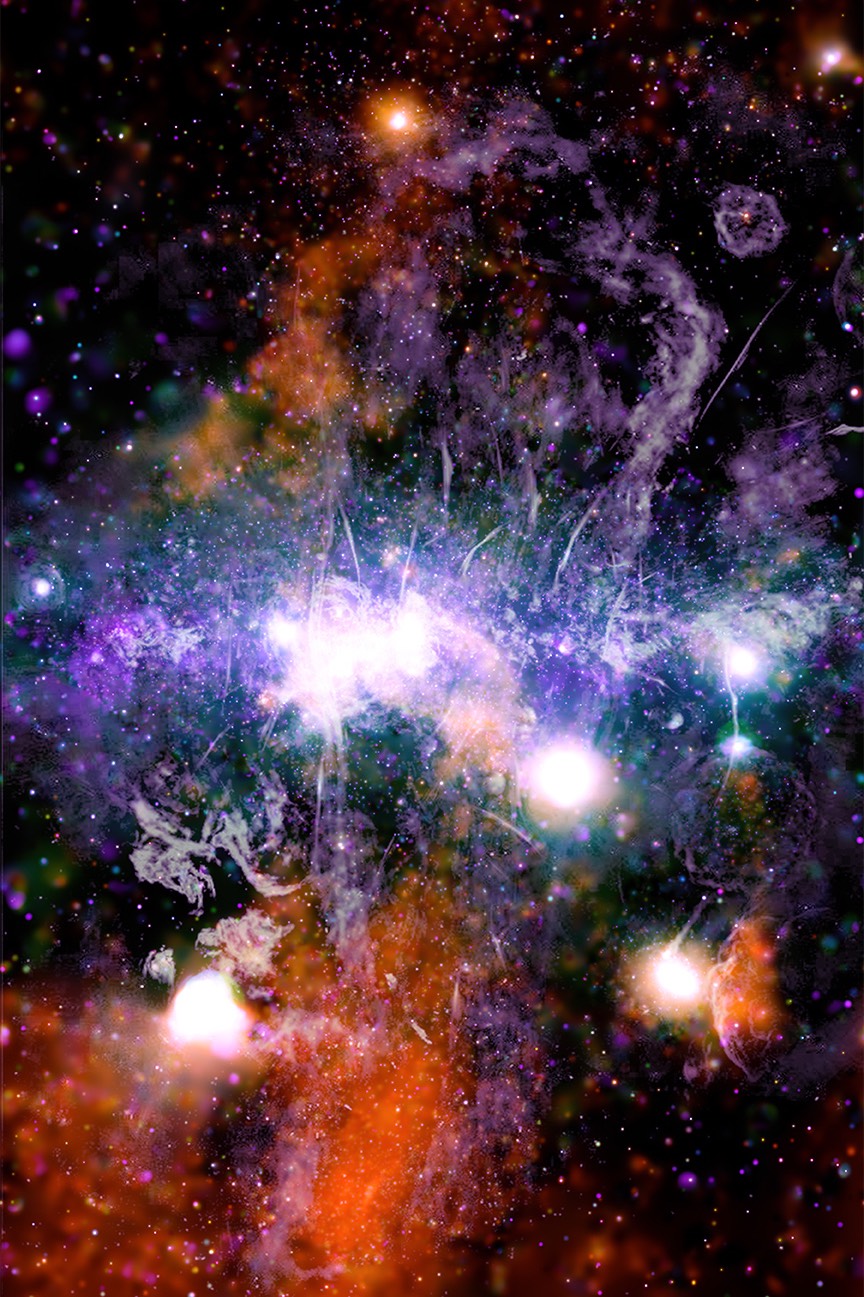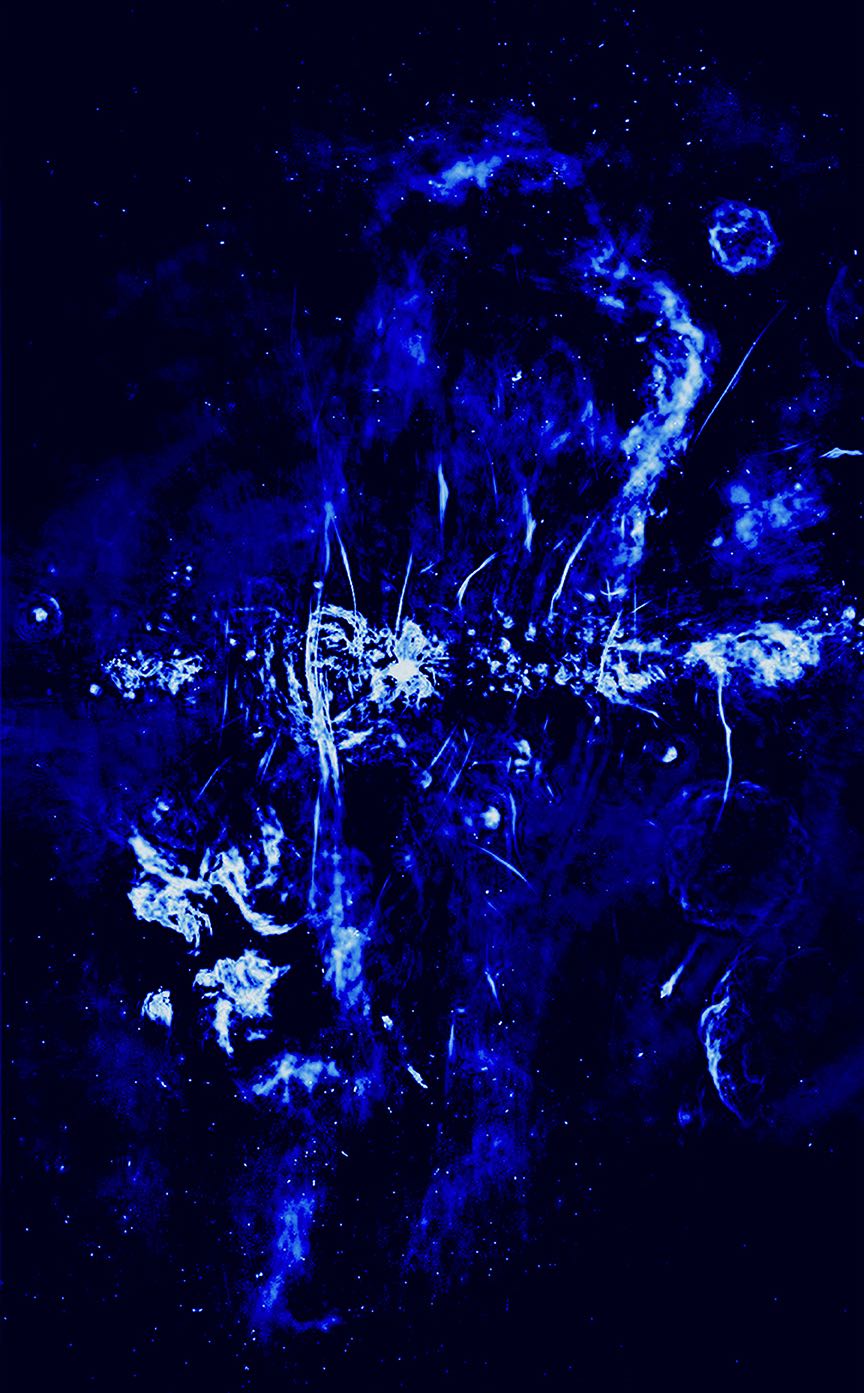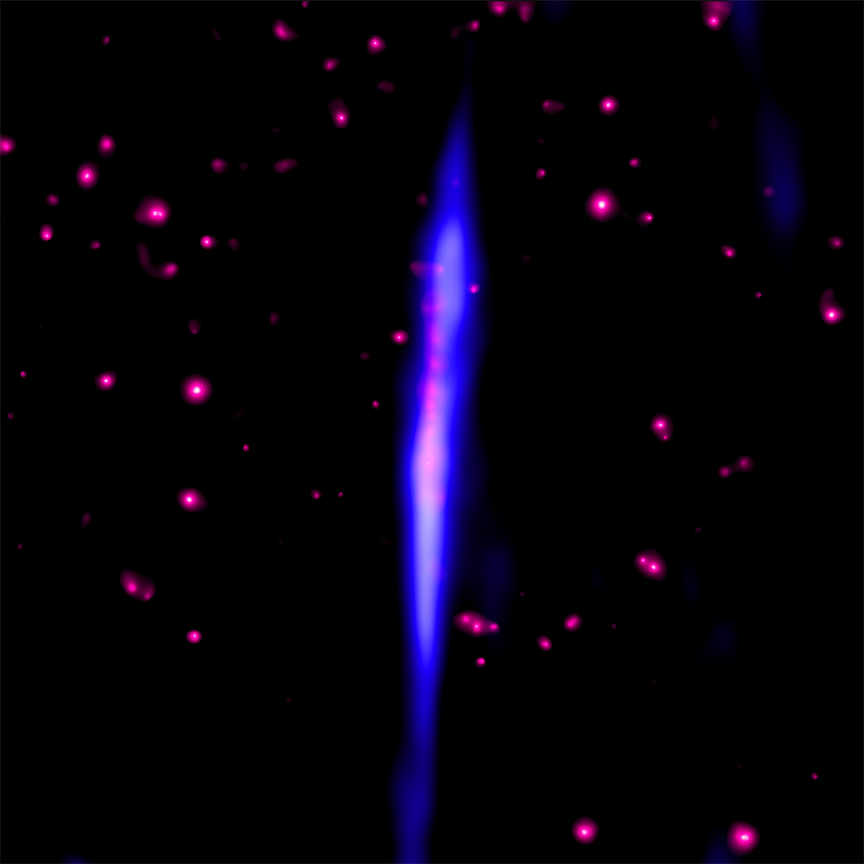Here's the most complete picture of the Milky Way's center ever created
Made from nearly 400 separate observations, the new image reveals strange structures never seen before.

Gaze up at the Sagittarius constellation, and you are looking at the center of the Milky Way galaxy. It may not look like much to the naked eye (especially if a bunch of space junk is blocking your view), but to the world's sharpest X-ray and radio telescopes, the archer hides a chaotic collage of black holes, exploding stars, magnetic fields and inexplicable bubbles of gas.
Now, using data from two such telescopes — NASA's Chandra X-ray Observatory and the MeerKAT radio telescope in South Africa — researchers just pieced together the most comprehensive picture yet of our galaxy's center. The result is a glorious tangle of orange, green and purple X-ray emissions, intertwined with tendrils of ghostly gray radio signals.
This image is an "unprecedented" view of the galactic center, plus the mysterious structures towering above and below it, according to a statement from Chandra researchers.
"The new panorama of the galactic center builds on previous surveys from Chandra and other telescopes," the researchers wrote in the statement. "This latest version expands Chandra's high-energy view farther above and below the plane of the galaxy — that is, the disk where most of the galaxy's stars reside" — than any previous imaging campaign, combining 370 separate observations from Chandra, the team added.

The composite view

The radio view

The tangled spear
This new vision of our galaxy contains many familiar sights. Smack-dab in the center of the image is the behemoth at the center of the galaxy: a brightly blazing supermassive black hole called Sagittarius A*. A dense megalopolis of stars crowds around the center — tugged on by the black hole's powerful gravity — adding to the purple and white glow of X-ray energy at the center of the image.
Switch to the radio view of the galactic center (you can cycle through different viewing options of the new Chandra collage) and you'll see the wispy scars of an ancient explosion: two "bubbles" of radio light, towering about 700 light-years above and below the galactic center.
These mysterious blobs of light may be related to the far bigger, far more energetic Fermi Bubbles, which are visible only in X-ray and gamma-ray light and soar for a whopping 25,000 light-years on either side of the galaxy's core. Scientists aren't sure what exactly created any of these energetic bubbles, but they may all link back to a single explosive event at Sagittarius A* a few million years ago.
Get the world’s most fascinating discoveries delivered straight to your inbox.
Similarly baffling is a newly discovered streak of light stabbing out of the galactic center, just below and to the left of Sagittarius A* in the image. Labeled G0.17-0.41, this strip of energy extends about 20 light-years and is made of intertwined filaments of X-ray and radio light, according to the researchers.
"Such strips may have formed when magnetic fields aligned in different directions, collided and became twisted around each other in a process called magnetic reconnection," the researchers wrote. "This is similar to the phenomenon that drives energetic particles away from the sun and is responsible for the space weather that sometimes affects Earth."
You can read more about that twisted new structure in a paper published April 26 to the preprint server arXiv.
Originally published on Live Science.

Brandon is the space / physics editor at Live Science. With more than 20 years of editorial experience, his writing has appeared in The Washington Post, Reader's Digest, CBS.com, the Richard Dawkins Foundation website and other outlets. He holds a bachelor's degree in creative writing from the University of Arizona, with minors in journalism and media arts. His interests include black holes, asteroids and comets, and the search for extraterrestrial life.


